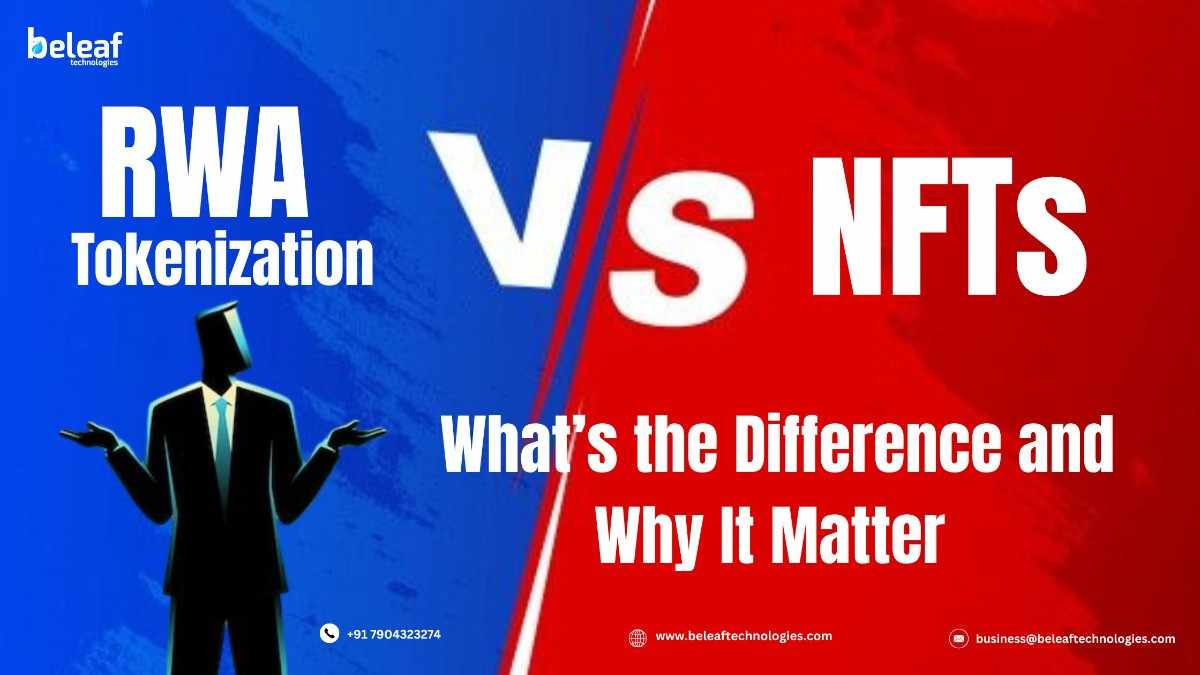


In our increasingly digital world, the concept of ownership is undergoing a profound transformation.
The process of transforming ownership rights of a tangible or conventional financial asset into a digital token on a blockchain is the fundamental component of Real World Asset (RWA) tokenization. Consider anything from a valuable work of art or a bar of gold to a piece of real estate or a stake in a business. By representing these assets as digital tokens, they can be easily divided, traded, and managed with greater transparency and efficiency.
On the other hand, Non-Fungible Tokens (NFTs) are unique digital certificates of ownership for a specific item, most often a digital one. The key word here is “non-fungible,” meaning each NFT is one-of-a-kind and cannot be replaced by another identical item. Think of the original Mona Lisa painting; there is only one. NFTs apply this concept of verifiable uniqueness to the digital realm. This has found significant application in digital art, collectibles, and gaming, where proving authenticity and ownership is crucial.
To put it simply, if RWA tokenization is like having digital shares of a real-world company, an NFT is like owning a unique, signed piece of digital art.
The distinction between RWA tokens and NFTs goes far beyond their definitions. It boils down to their fundamental purpose, the nature of their value, and how they are used.
Value Proposition: The value of an RWA token is directly linked to the underlying real-world asset it represents. The price of a tokenized real estate share will fluctuate based on the property’s value and rental income. In contrast, the value of an NFT is often more subjective, driven by factors like artistic merit, rarity, and community demand.
Divisibility: A key feature of RWA tokenization is fractional ownership. This allows for the division of high-value assets into smaller, more affordable units. NFTs, by their very nature, are generally indivisible; you own the entire unique digital item. While some technologies are exploring the fractionalization of NFTs, their primary purpose remains to represent whole, unique assets.
Purpose and Use Case: RWA tokenization is primarily focused on making traditional investments more accessible, liquid, and efficient. It’s about transforming existing financial markets.On the other hand, NFTs have empowered producers and collectors in the digital sphere by generating completely new marketplaces for digital goods and collectibles.
While NFTs have captured headlines with their high-profile sales, the potential of RWA tokenization to reshape the financial landscape is immense and overwhelmingly positive.This is why the general public should care:
Democratizing Investment: For centuries, high-value assets like commercial real estate, fine art, and private equity have been the exclusive domain of the wealthy. RWA tokenization breaks down these barriers, allowing individuals to invest with smaller amounts of money. Platforms like RealT, for instance, offer fractional ownership in residential properties, with investors able to buy tokens for as little as $50.
Enhanced Liquidity: A lot of assets in the real world are infamously illiquid, which means that they are difficult or time-consuming to turn into cash. For instance, selling a building may take several months. By tokenizing these assets and listing them on digital marketplaces, they can be traded much more freely and quickly, similar to stocks. This increased liquidity benefits both asset owners and investors.
Greater Transparency and Security: Blockchain technology provides a transparent and unchangeable record of every transaction. This means that ownership of a tokenized asset is clear and can be easily verified, reducing the risk of fraud and disputes.
Global Accessibility: RWA tokenization transcends geographical borders. An investor in one country can easily purchase a token representing a share in a property located in another, opening up a world of investment opportunities that were previously inaccessible.
Real-world asset tokenization is not merely a theoretical idea; it is now taking place. Major financial institutions like Santander have successfully issued bonds on the Ethereum blockchain. The St. Regis Aspen Resort raised $18 million by offering tokenized ownership. Even the art world is embracing this, with platforms like Maecenas tokenizing works by renowned artists like Andy Warhol, allowing for fractional ownership.
.
